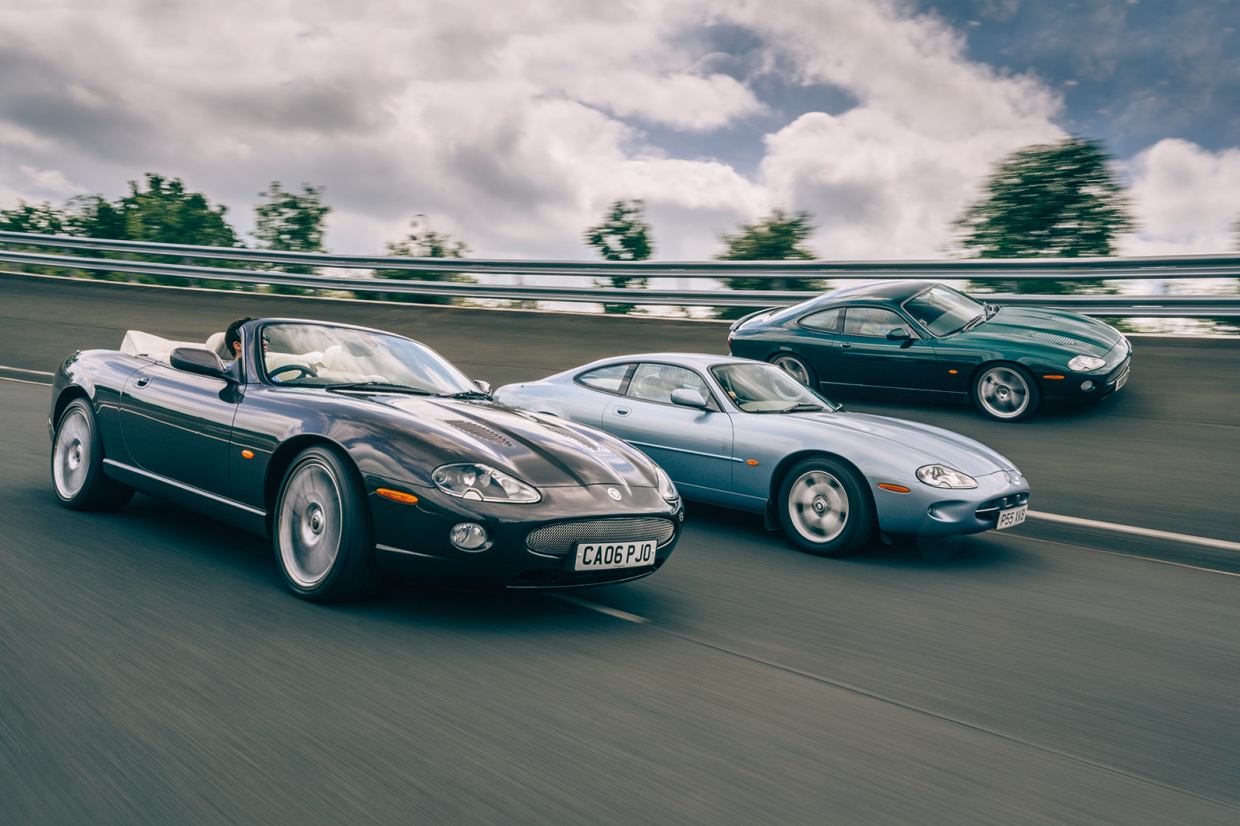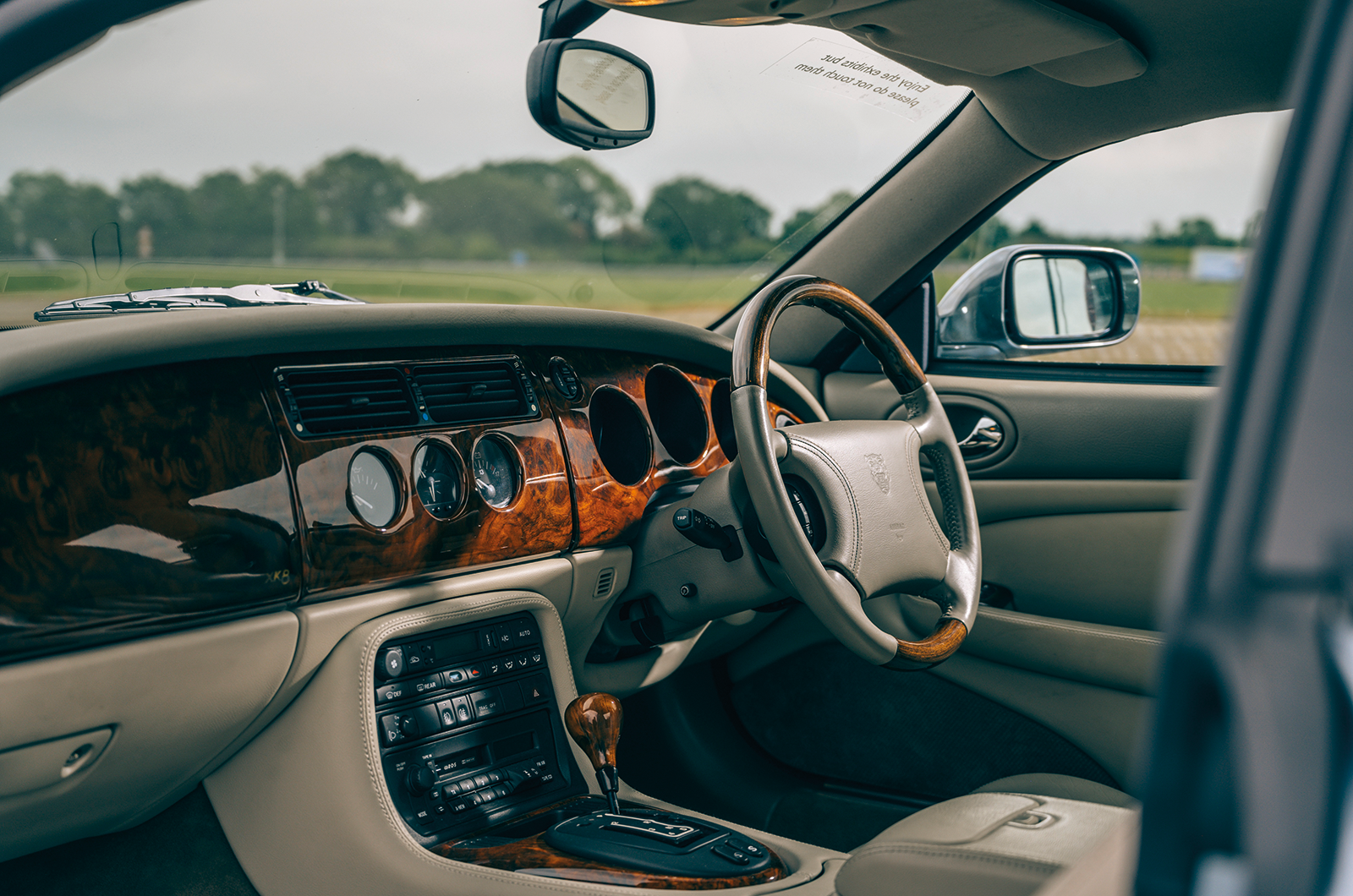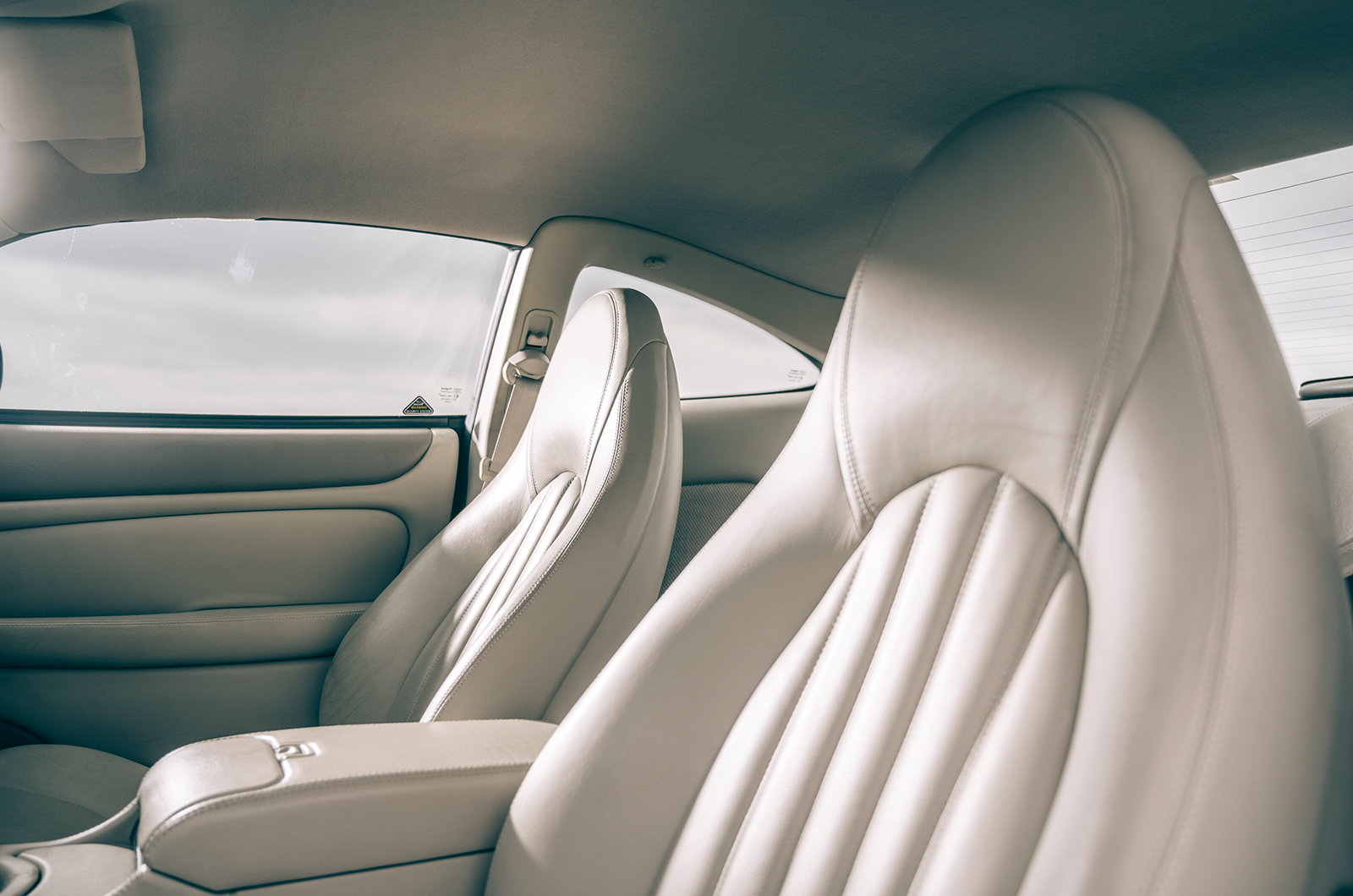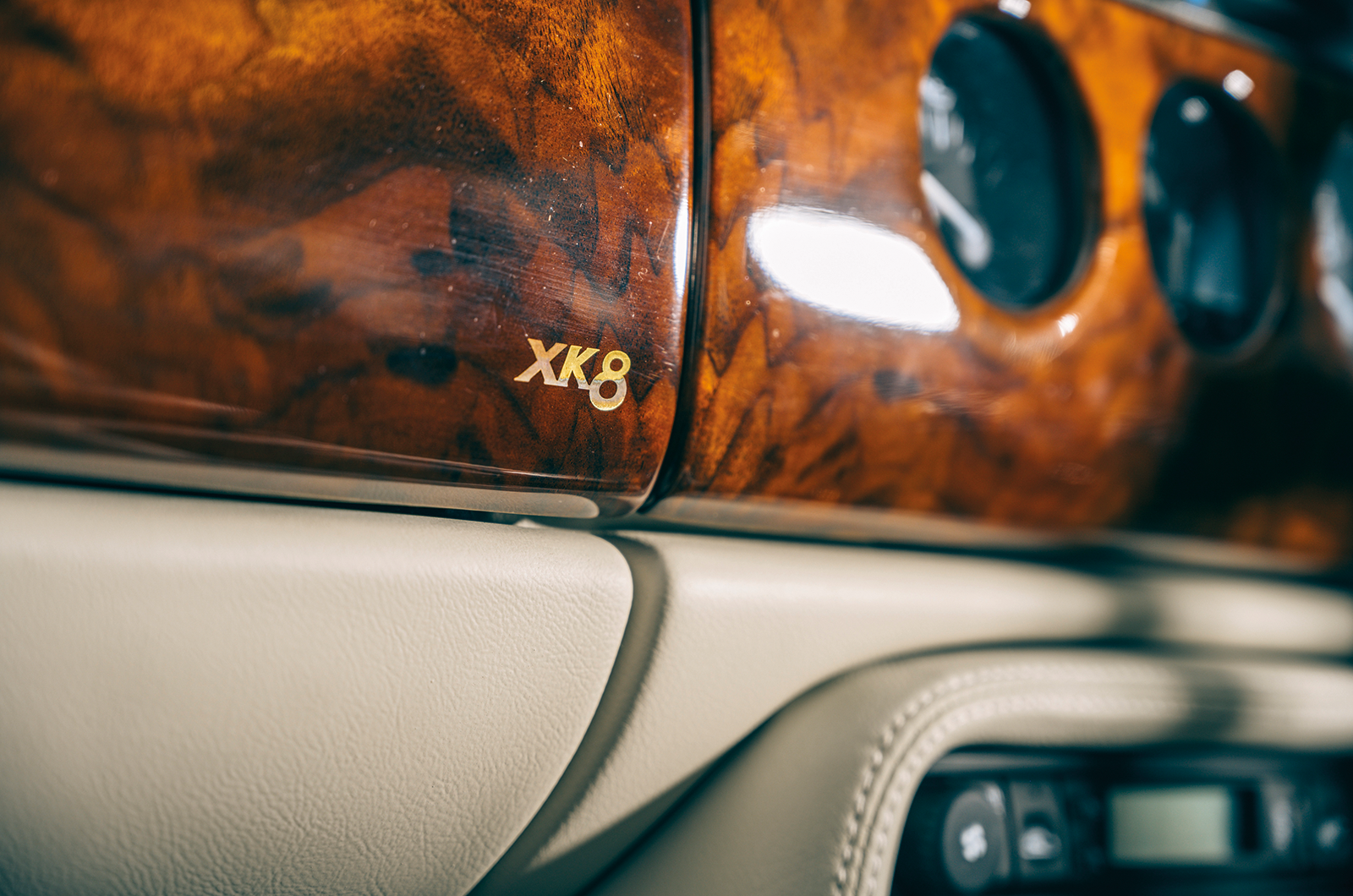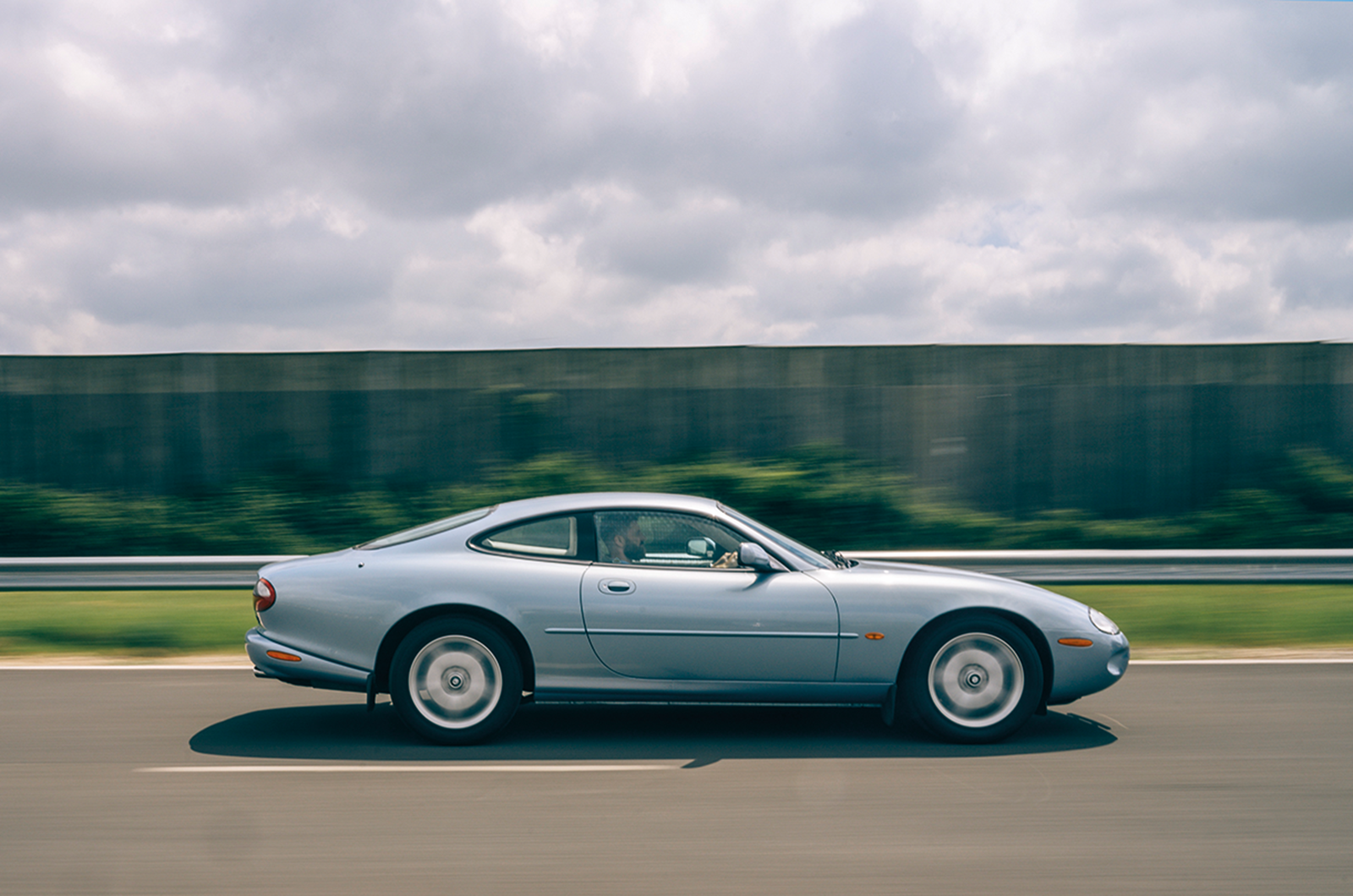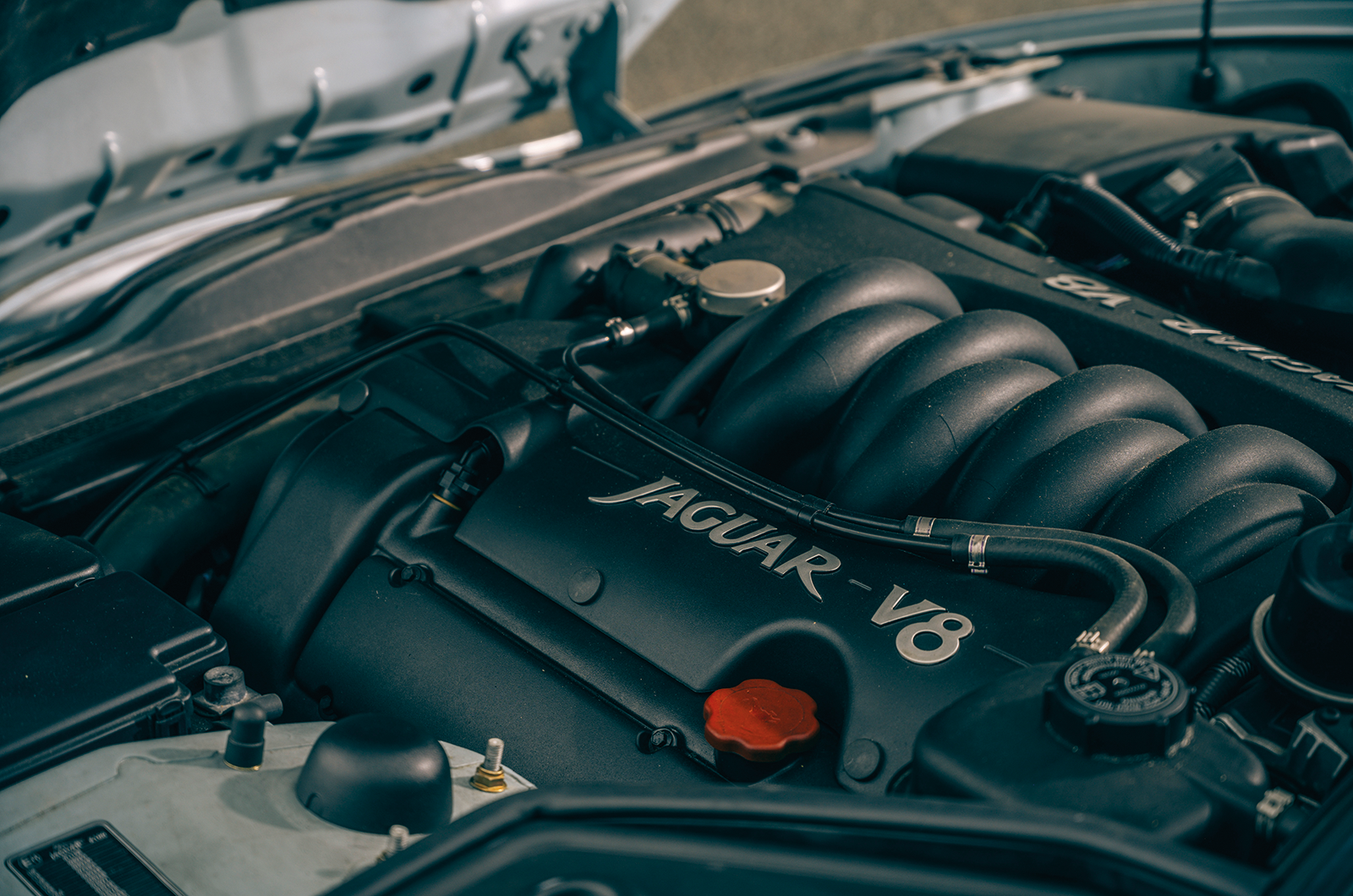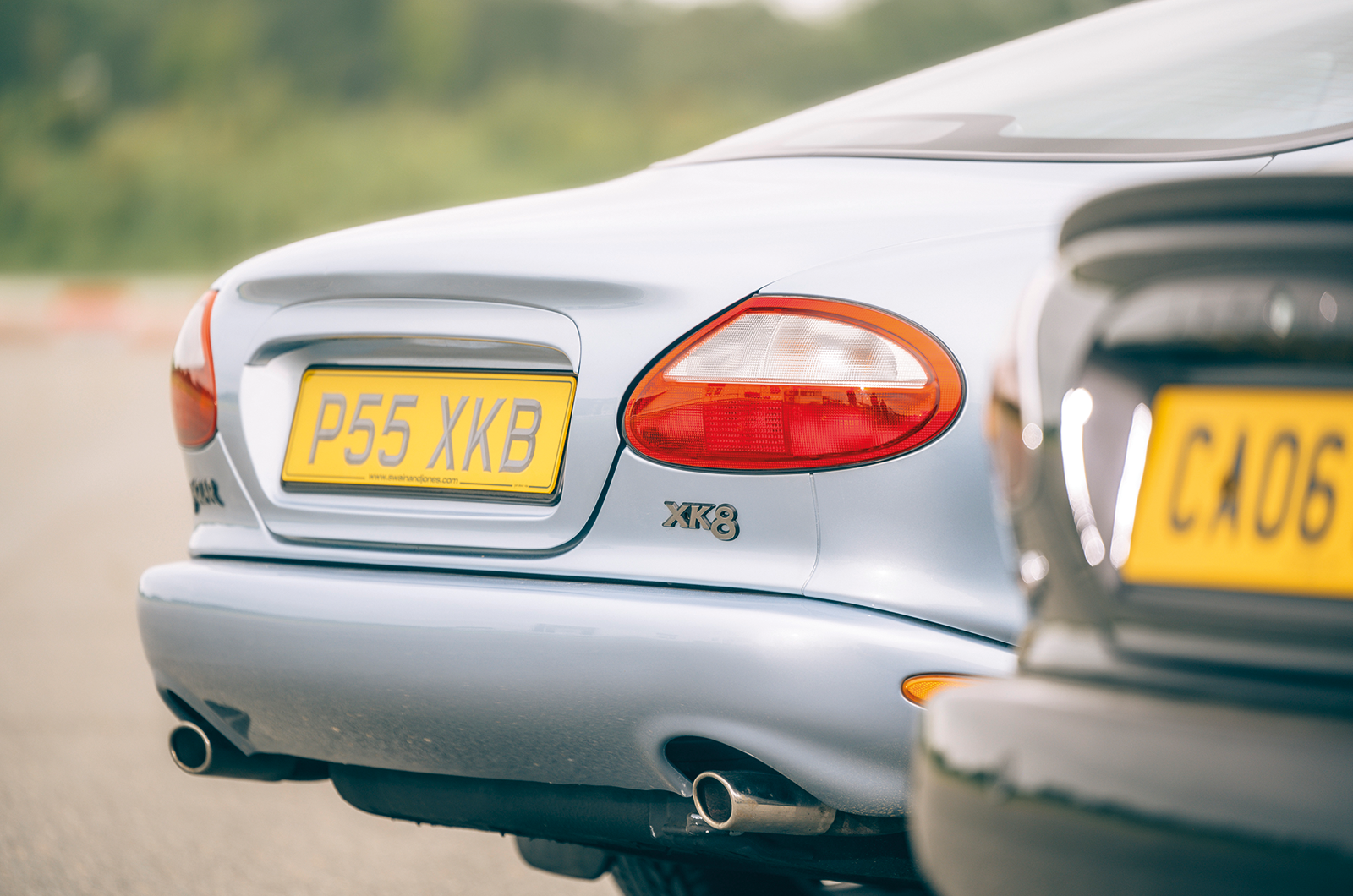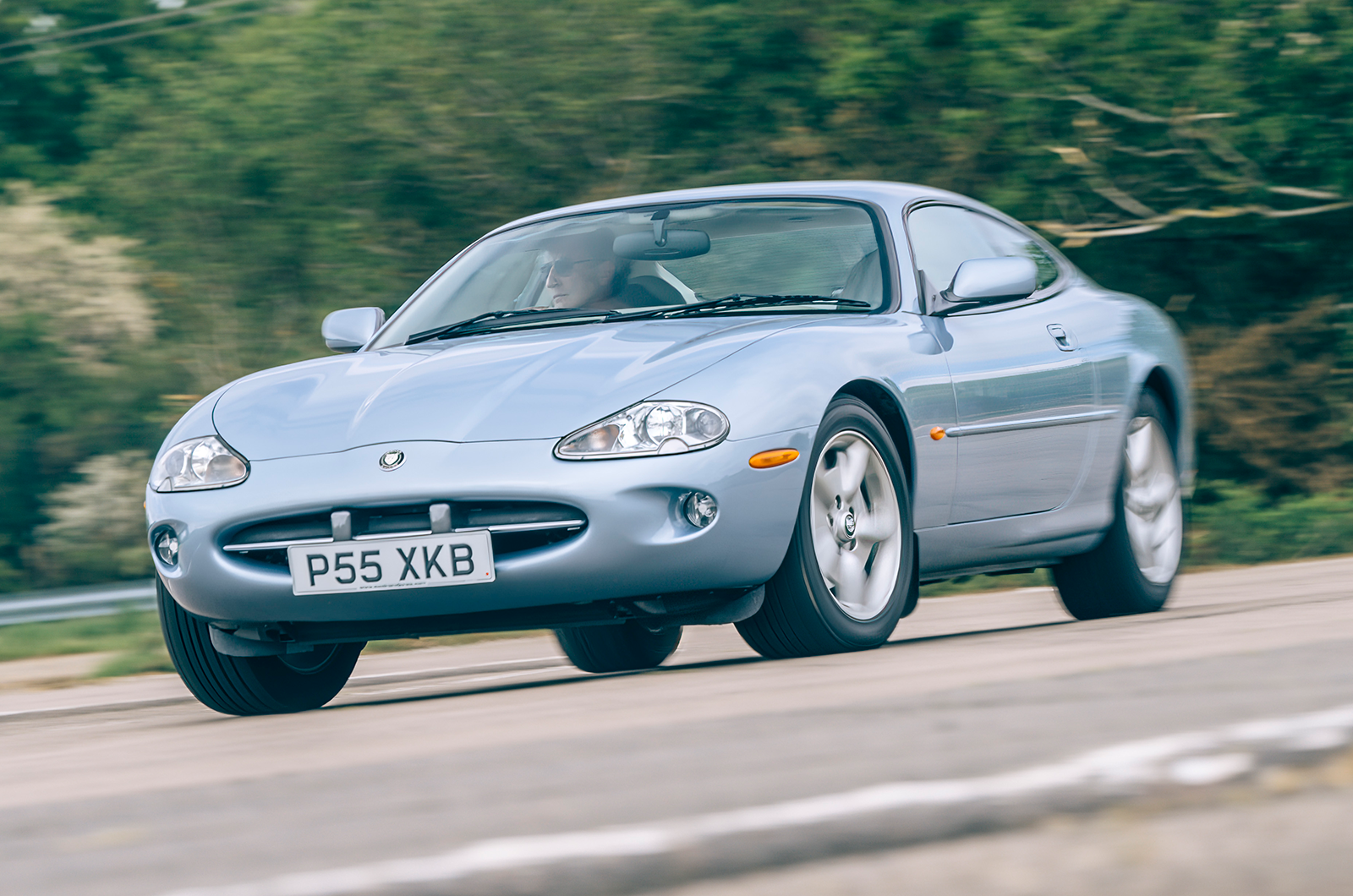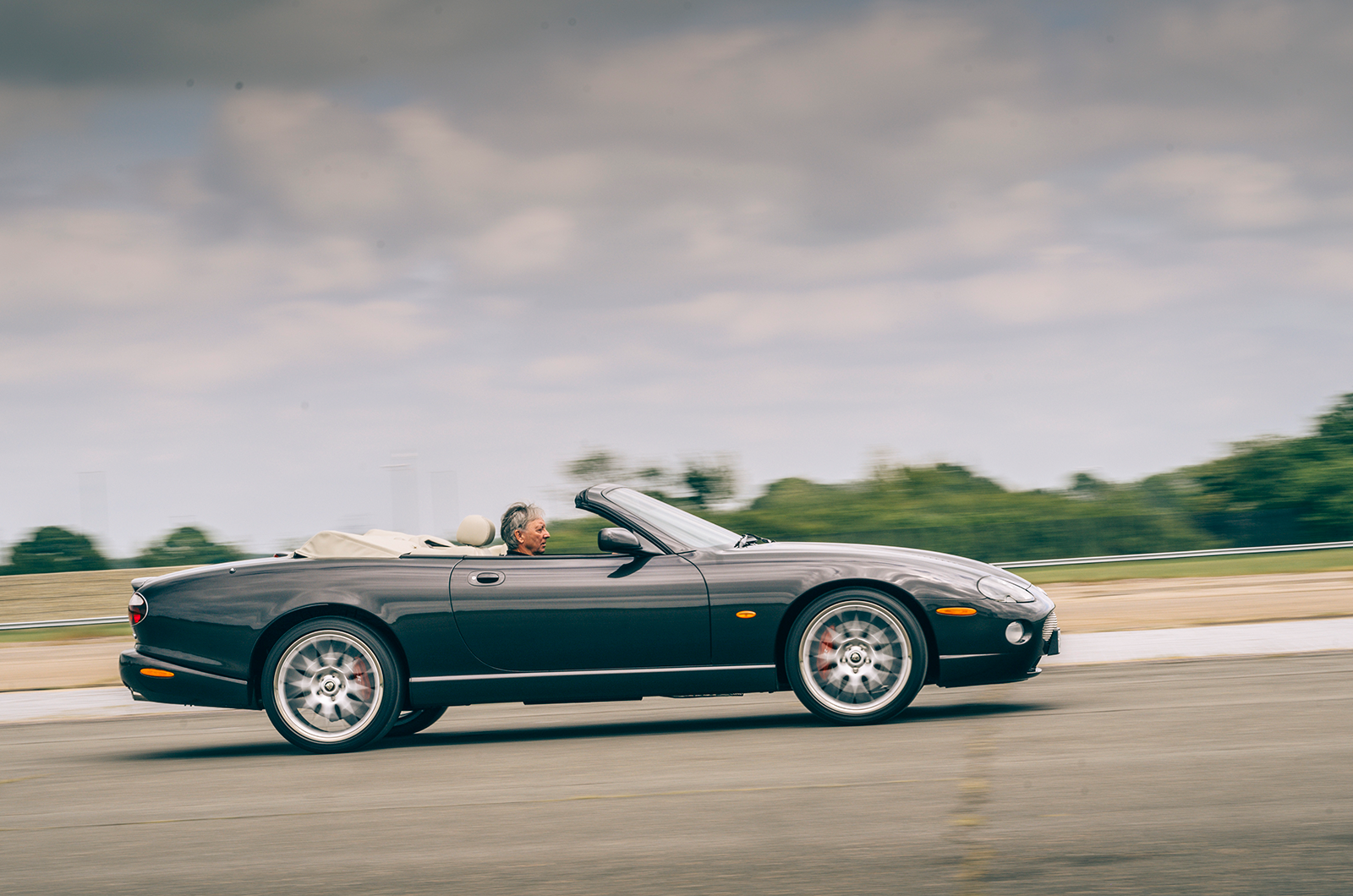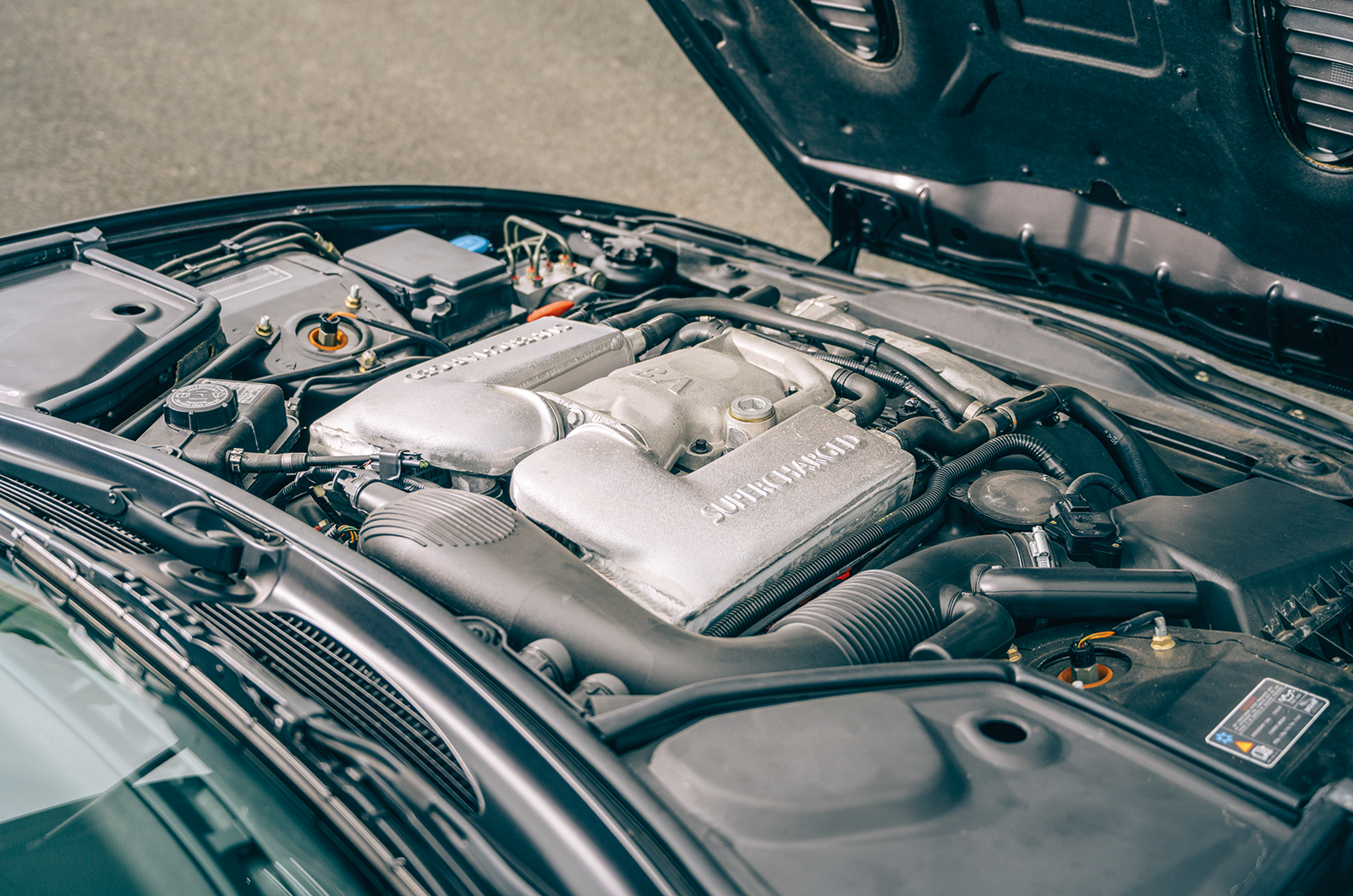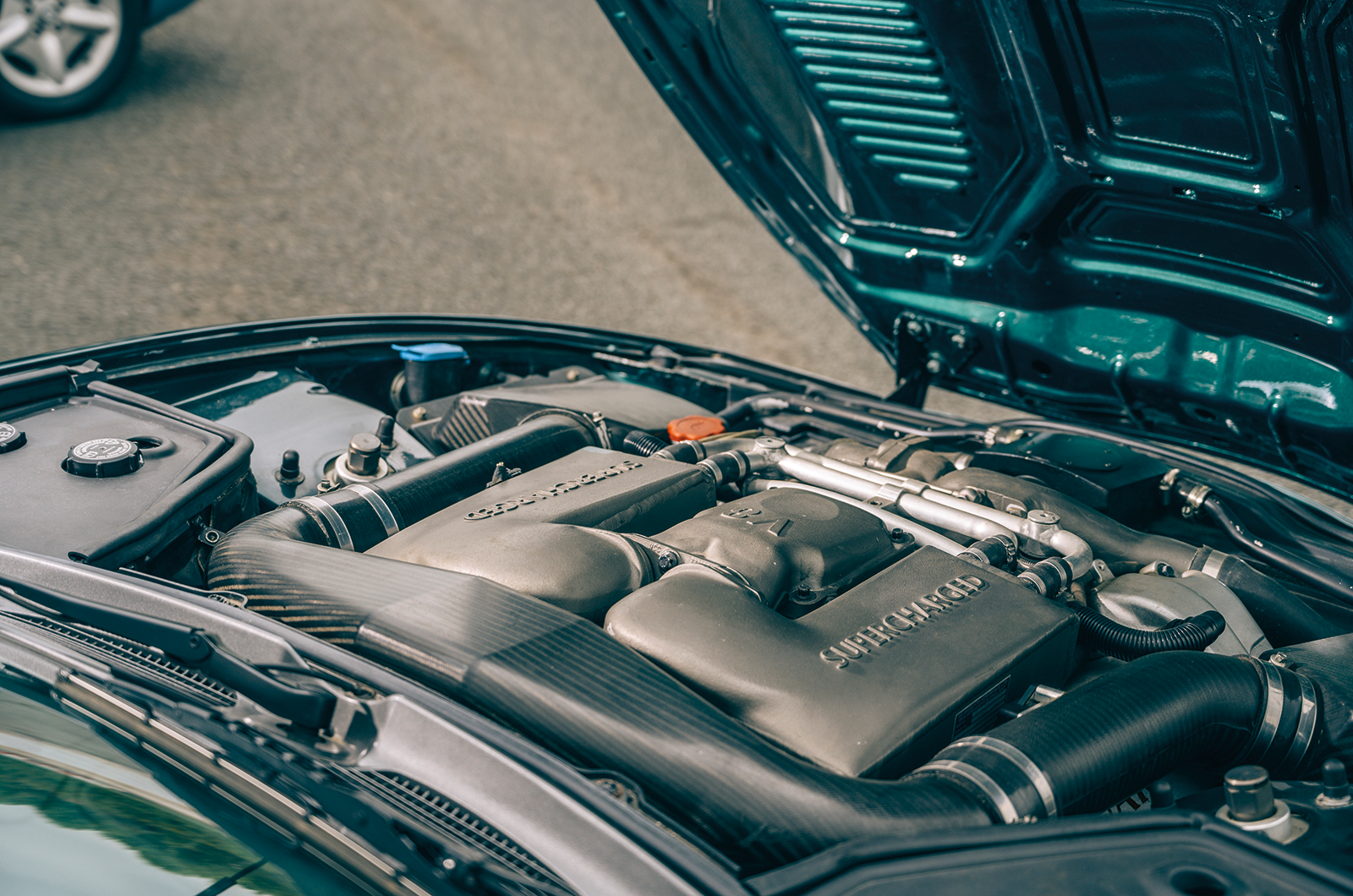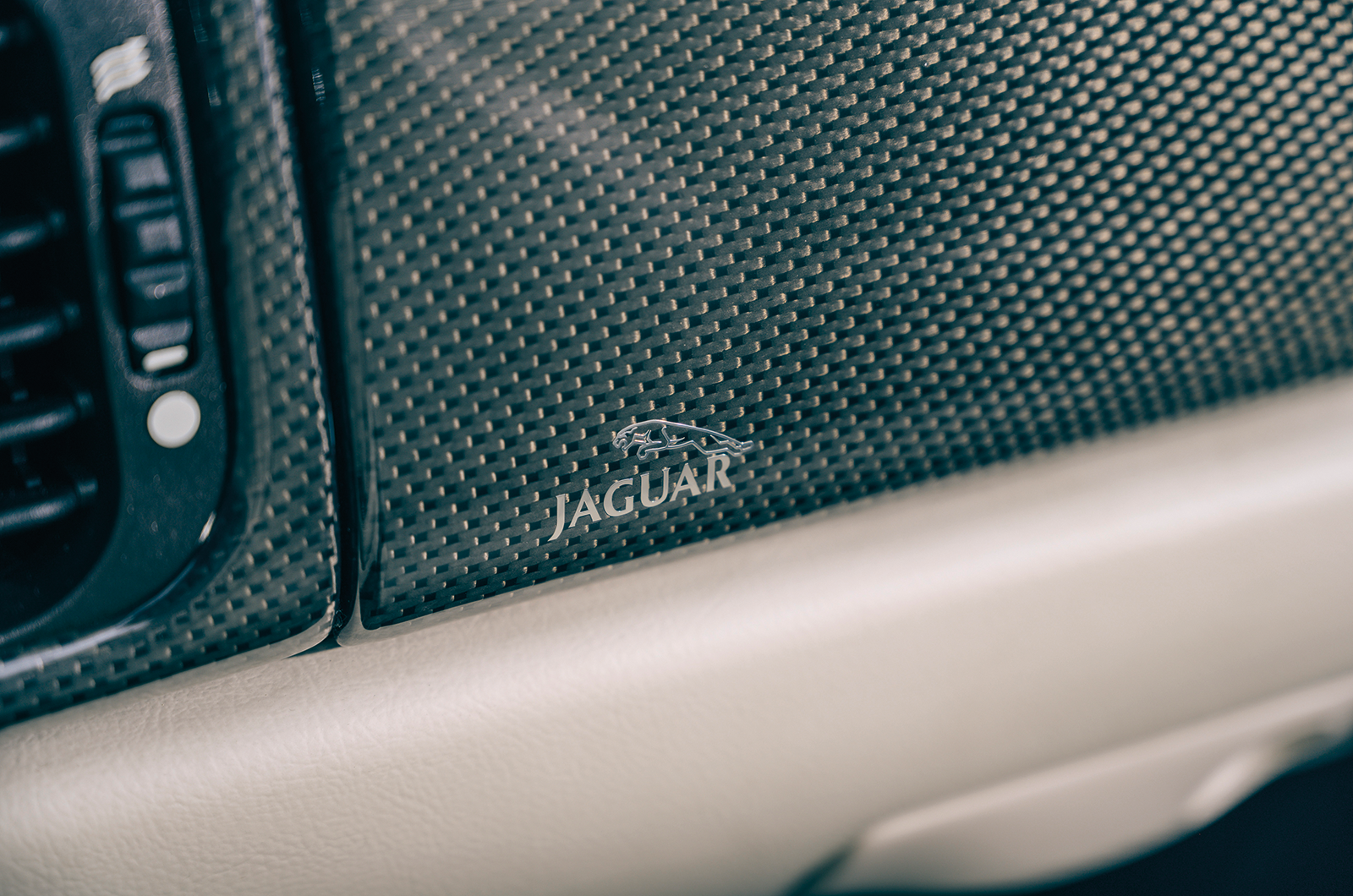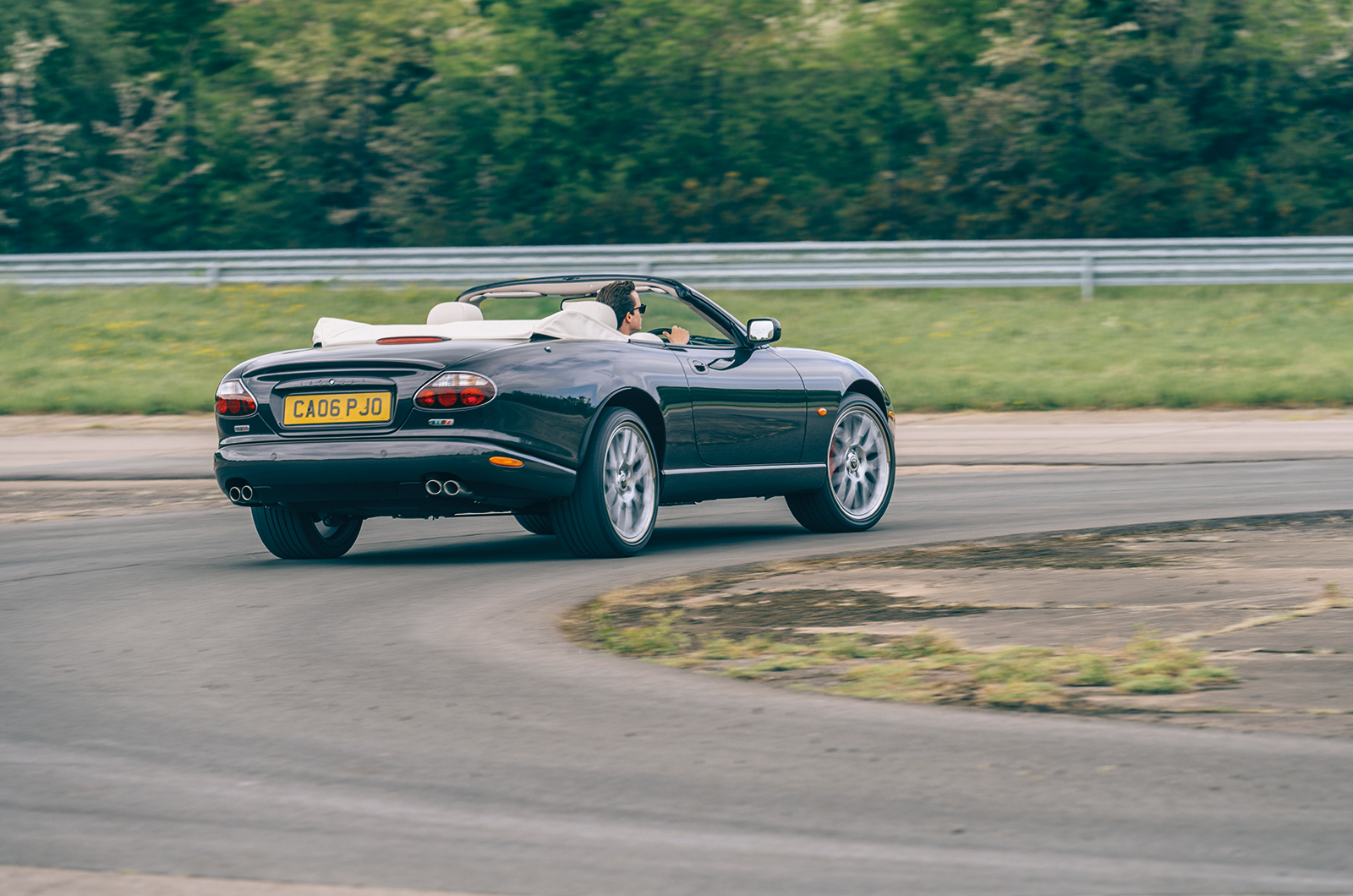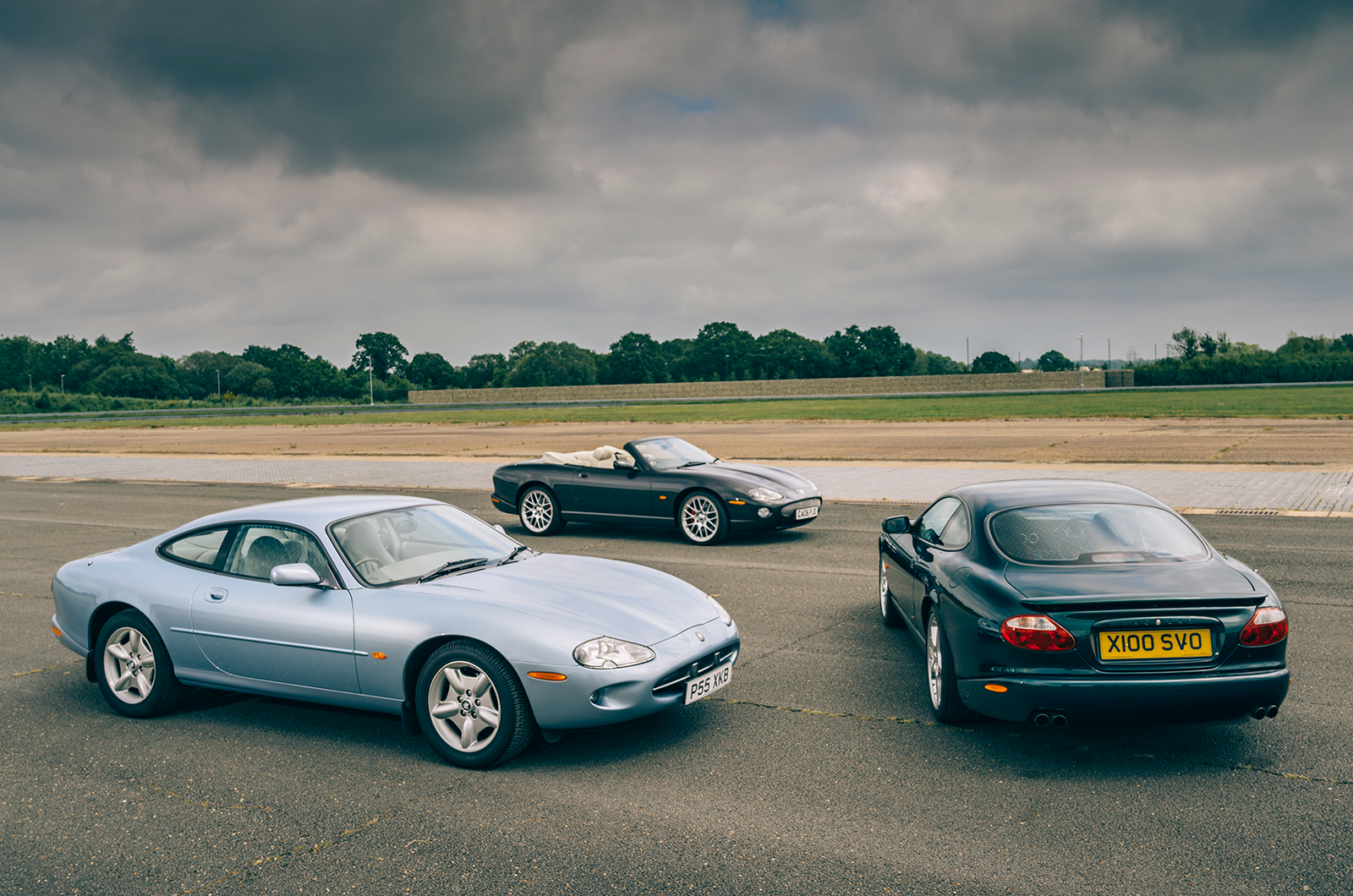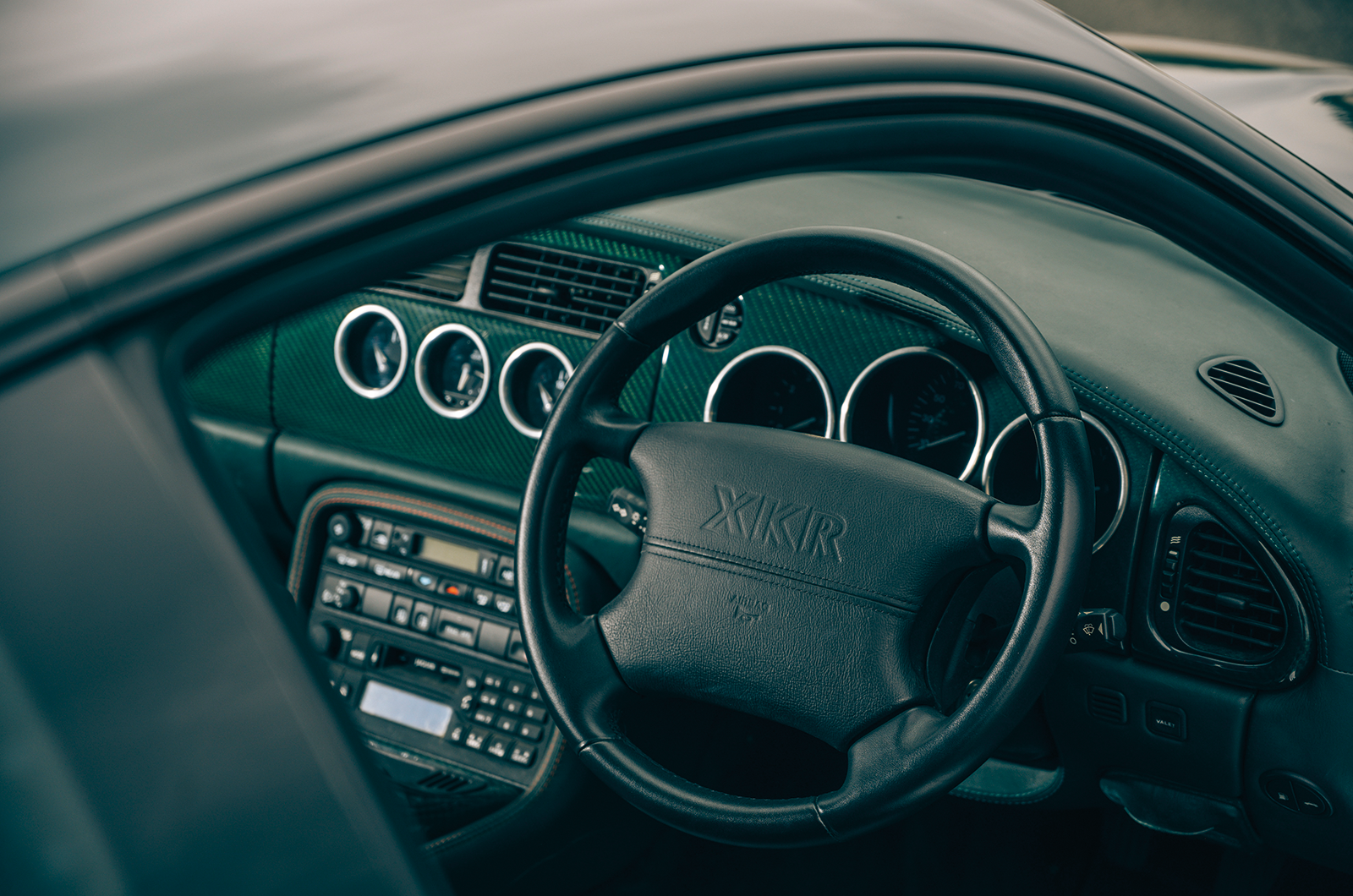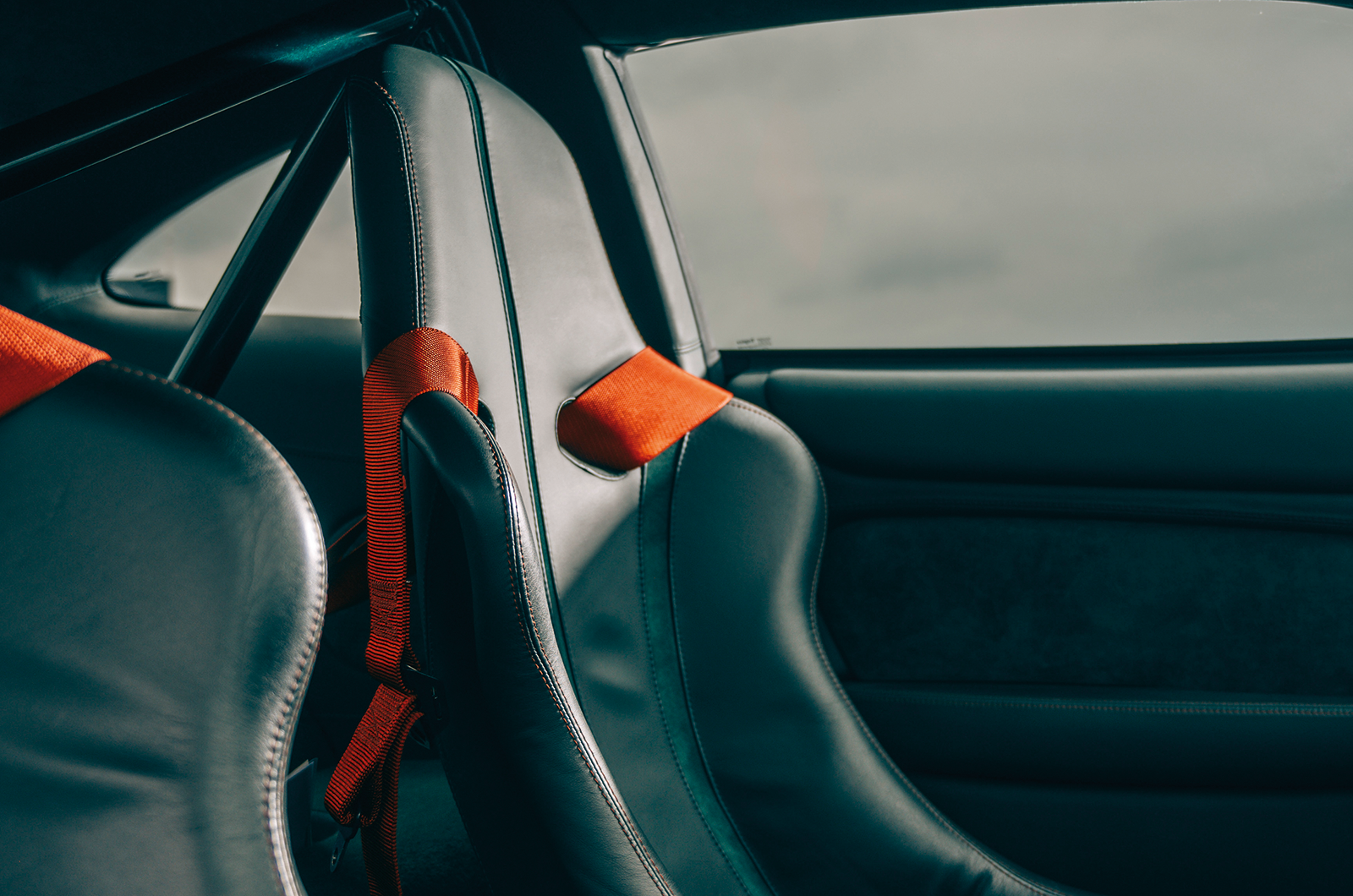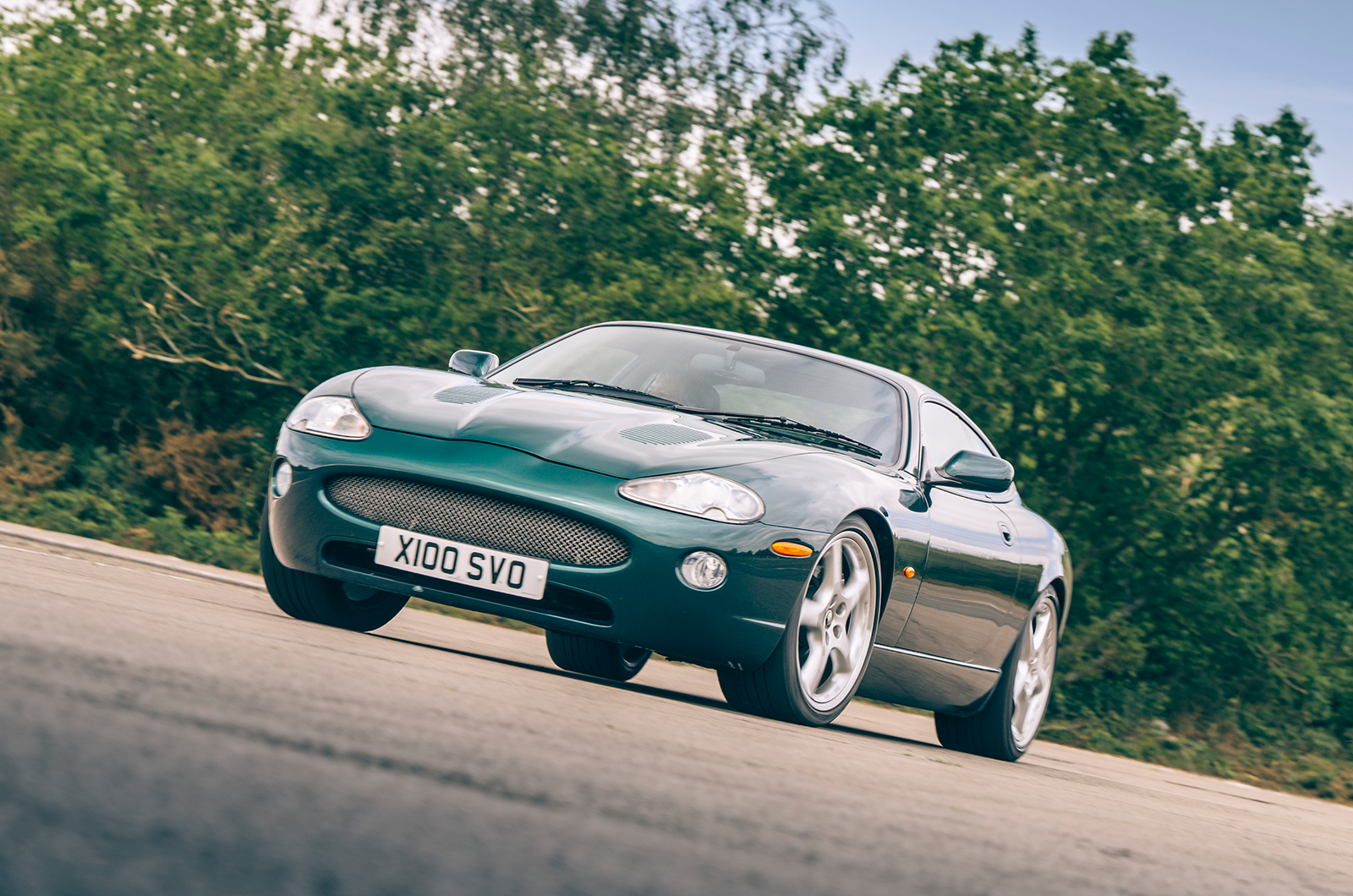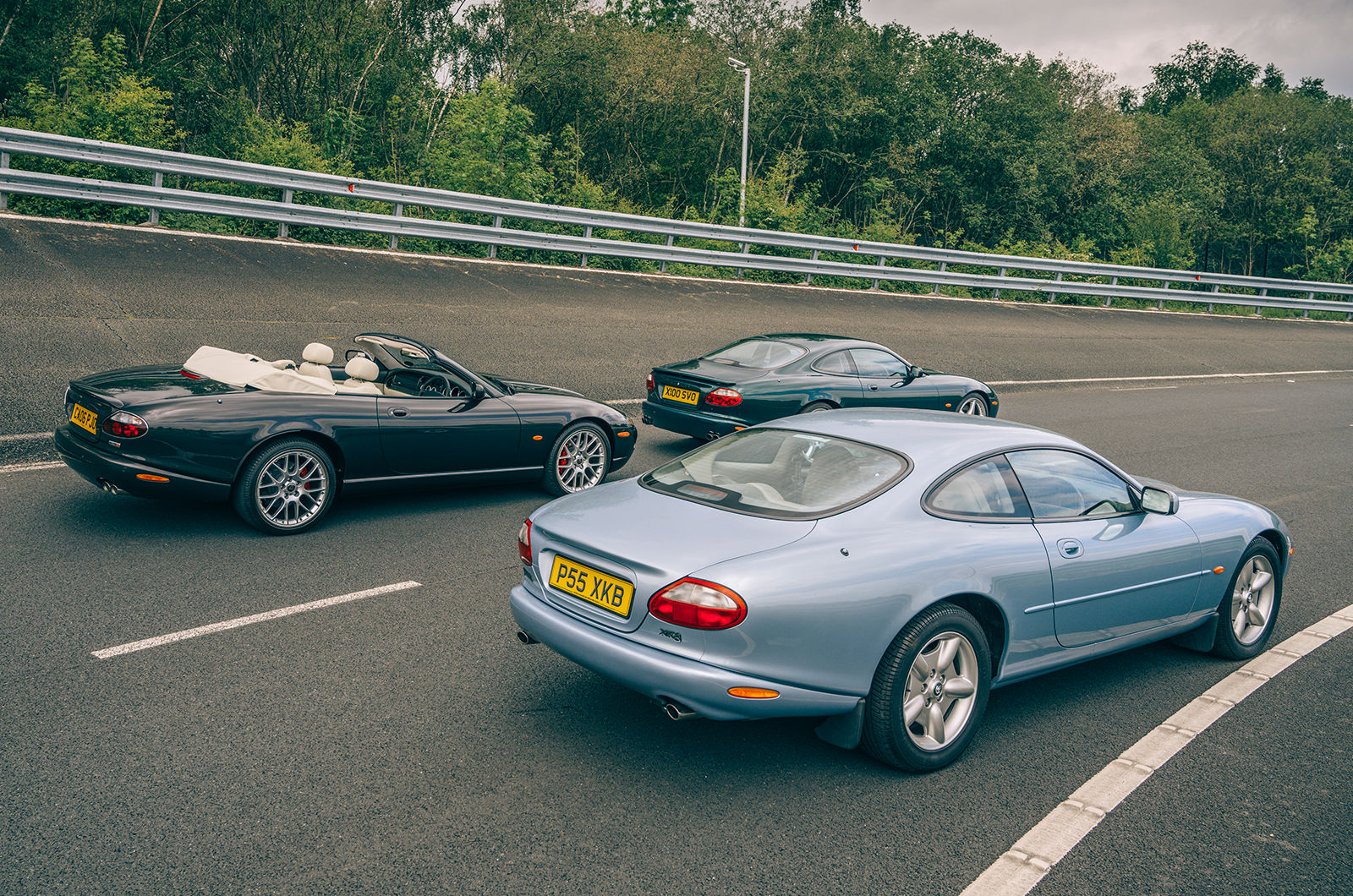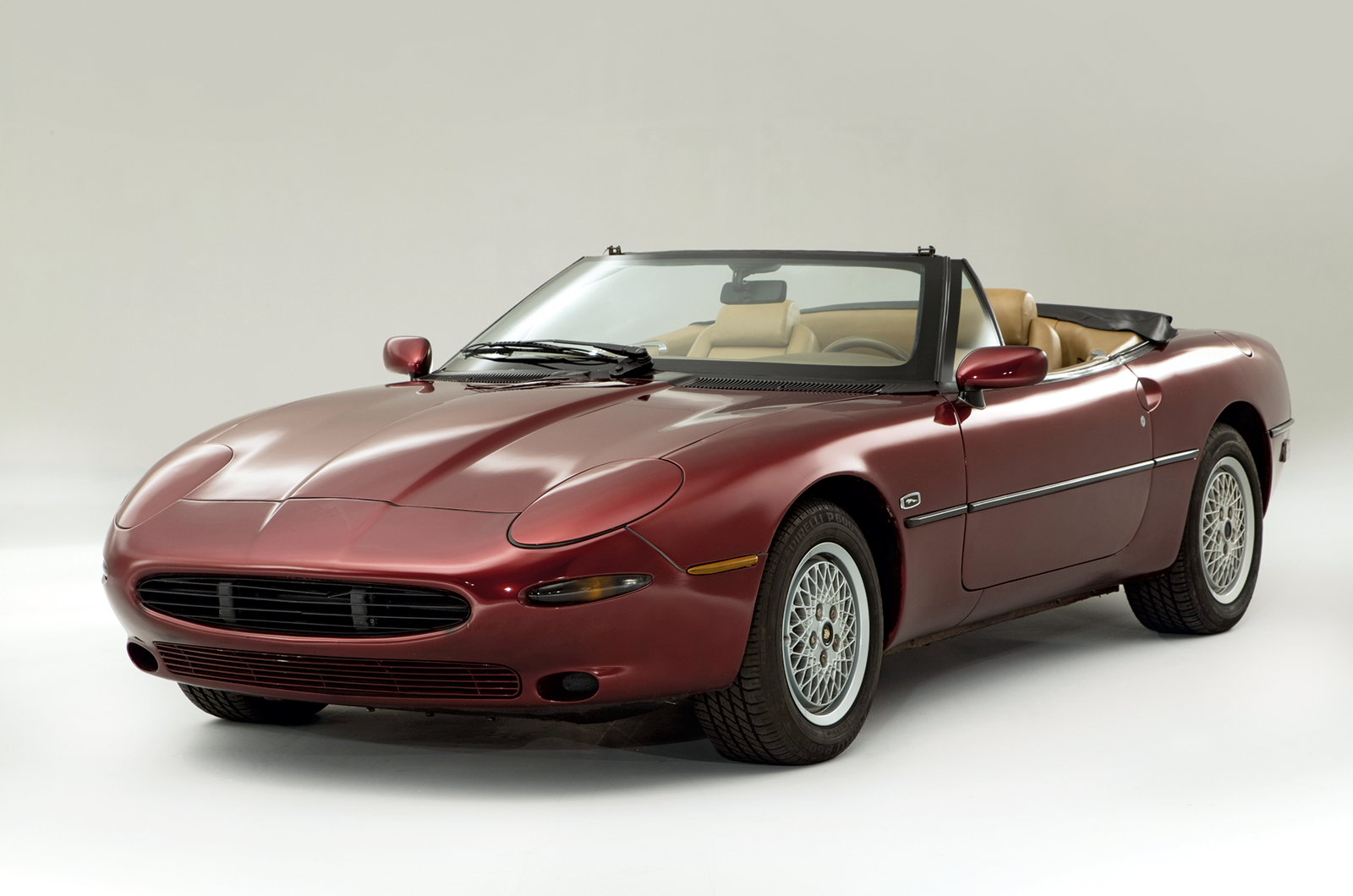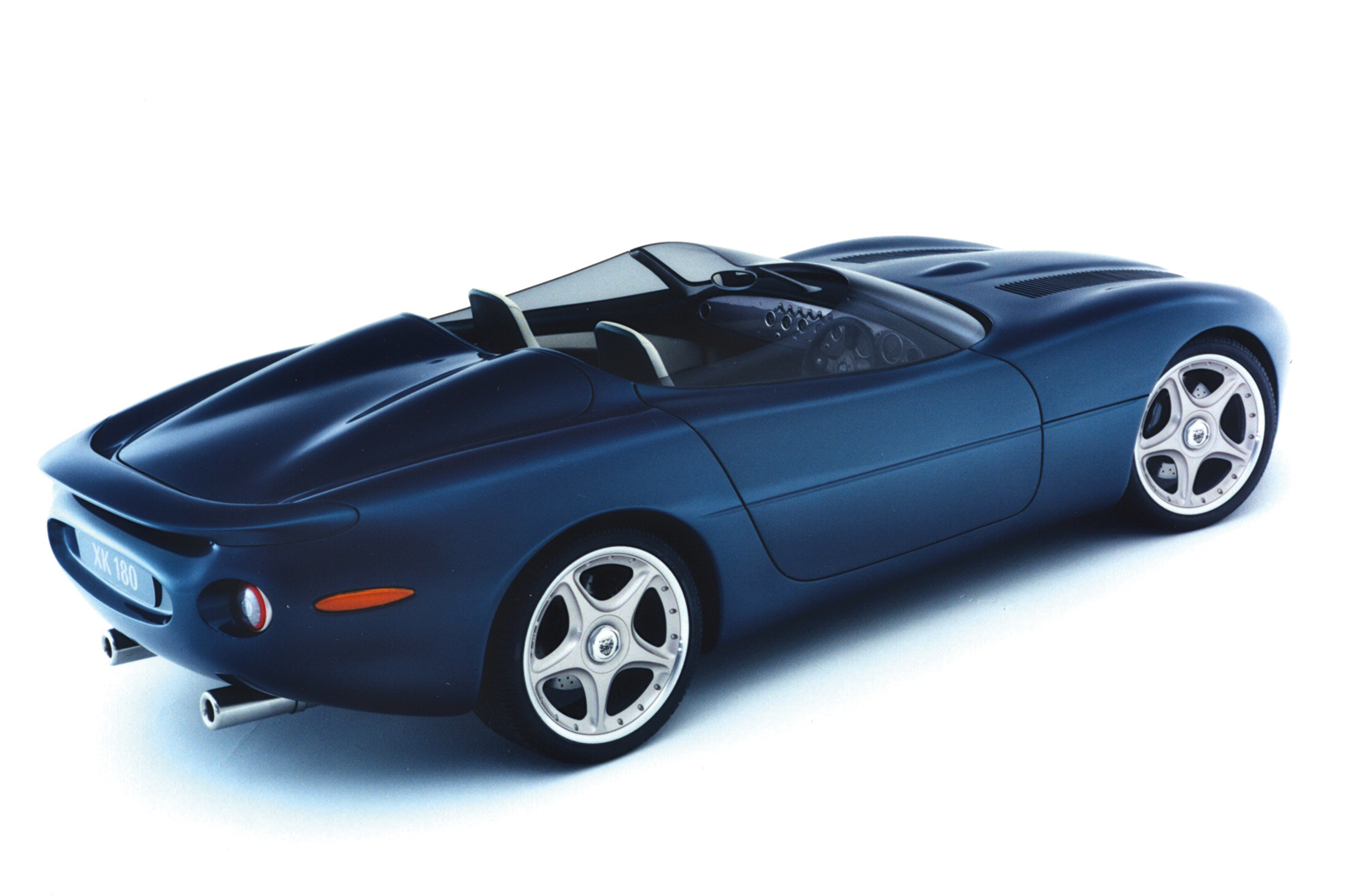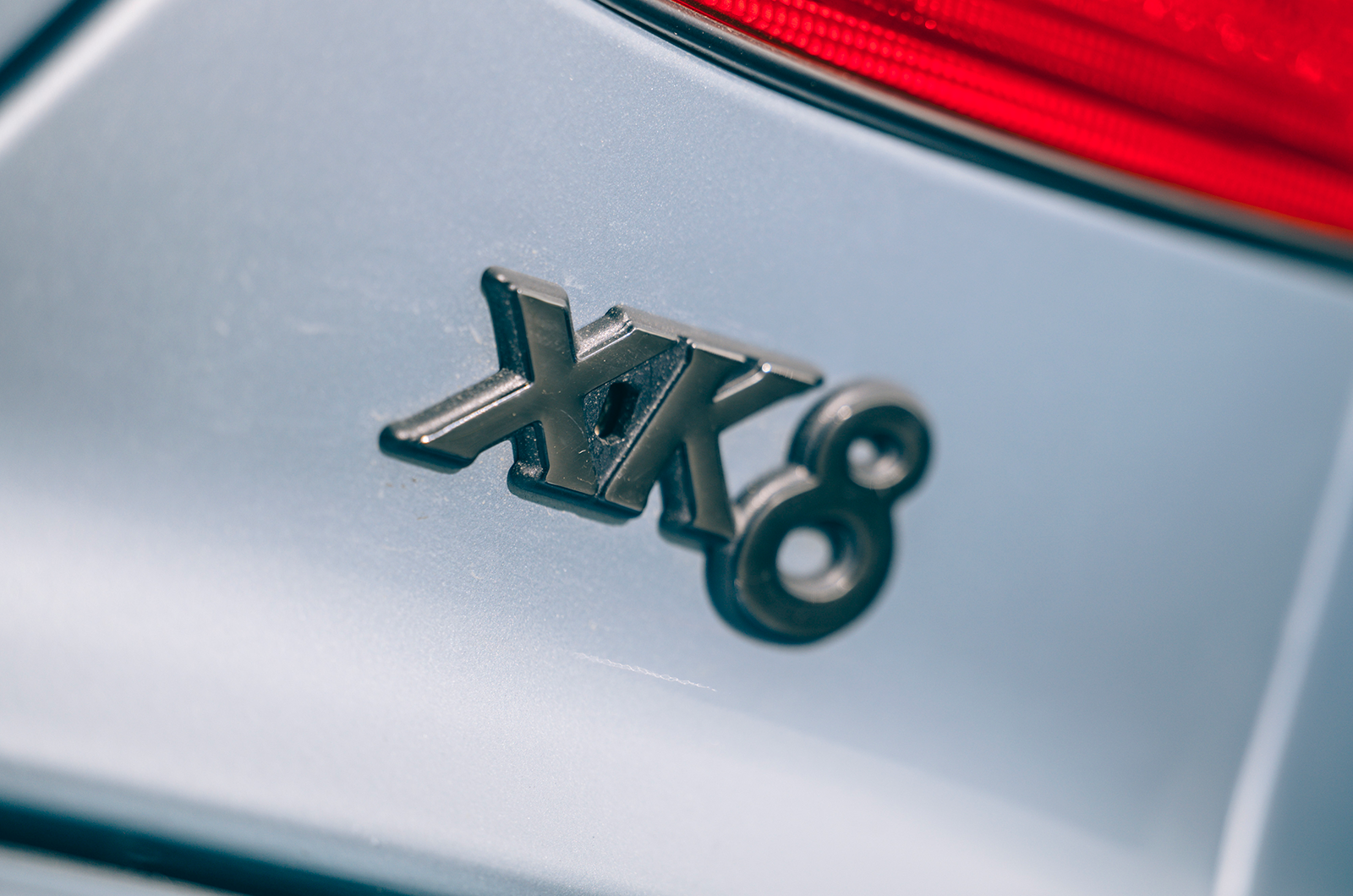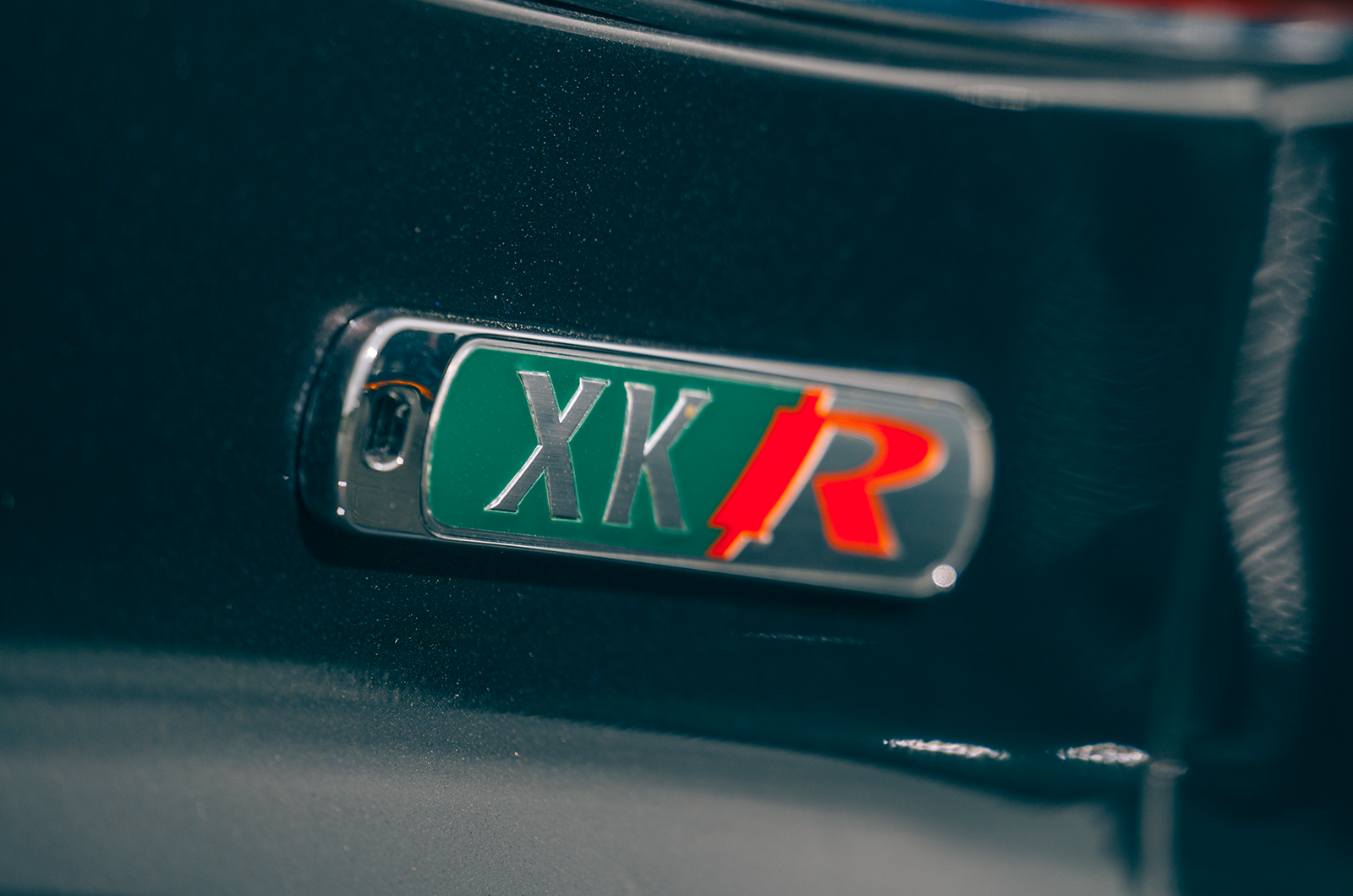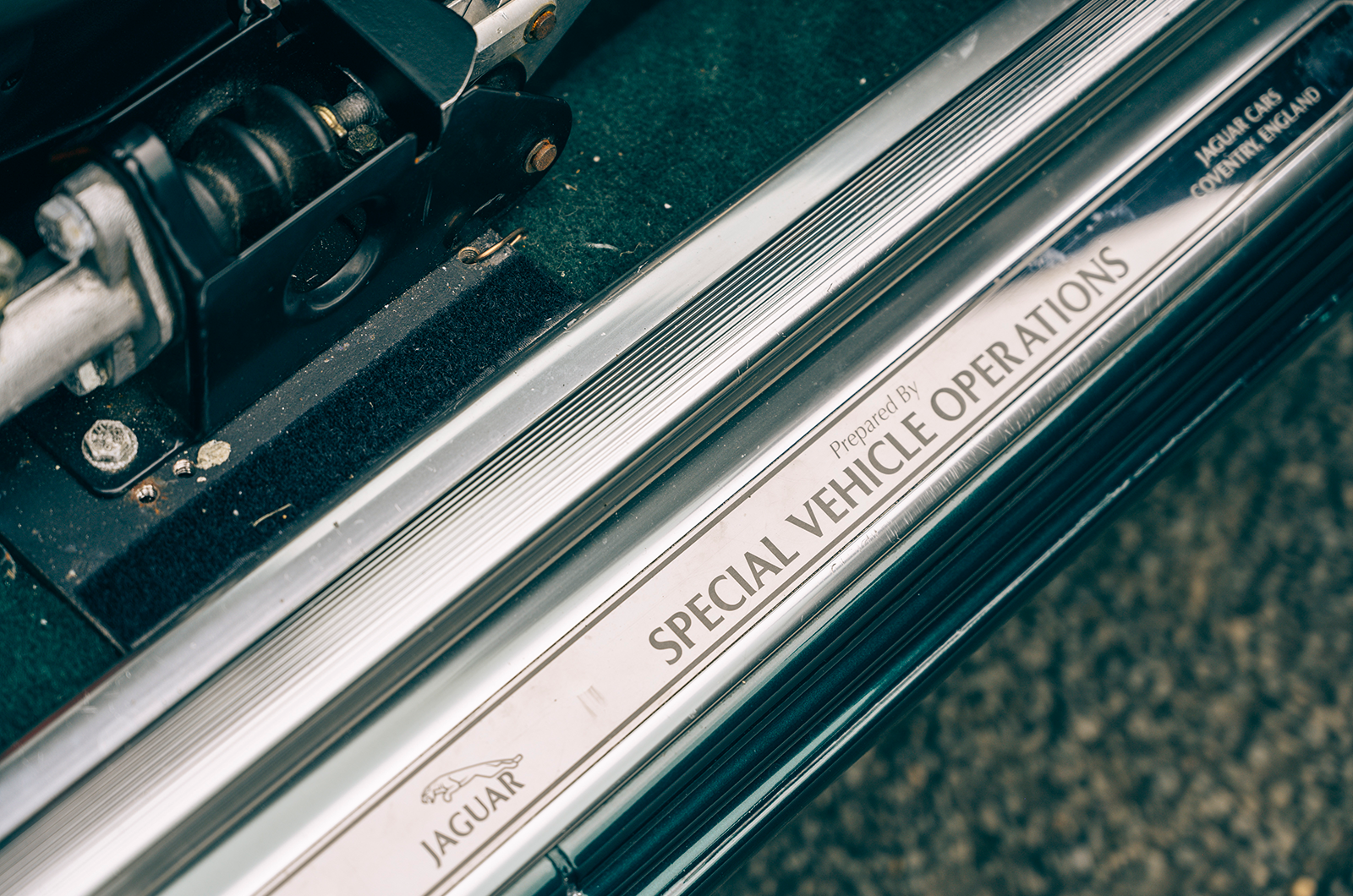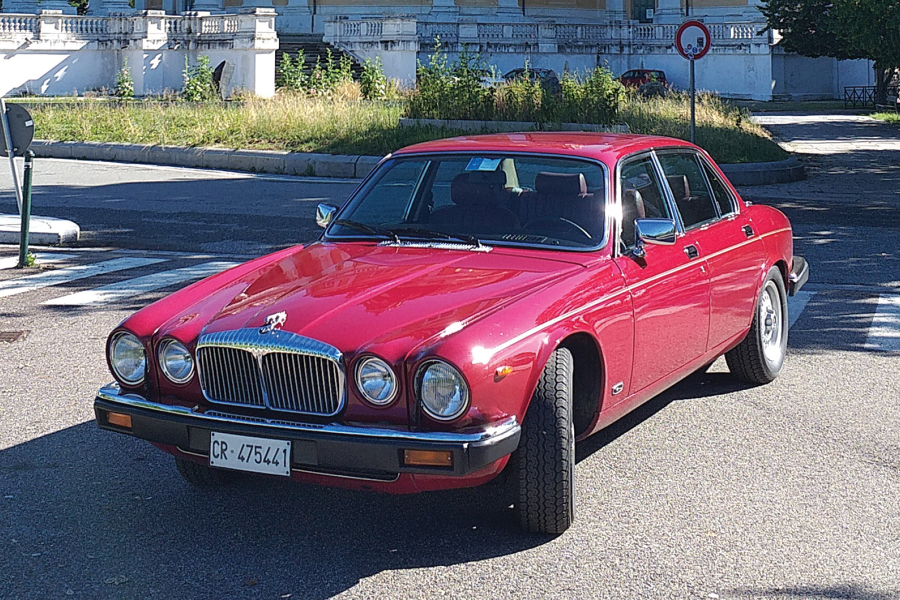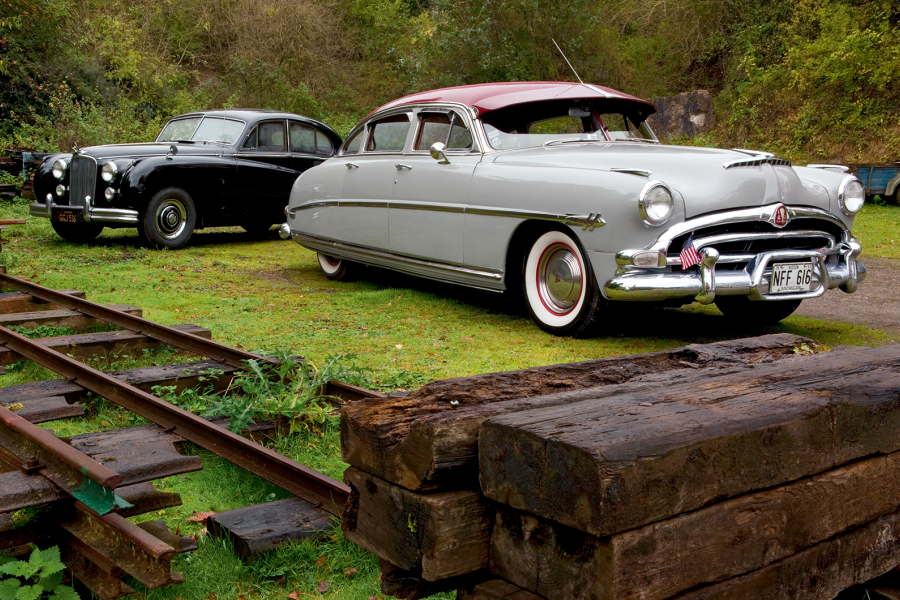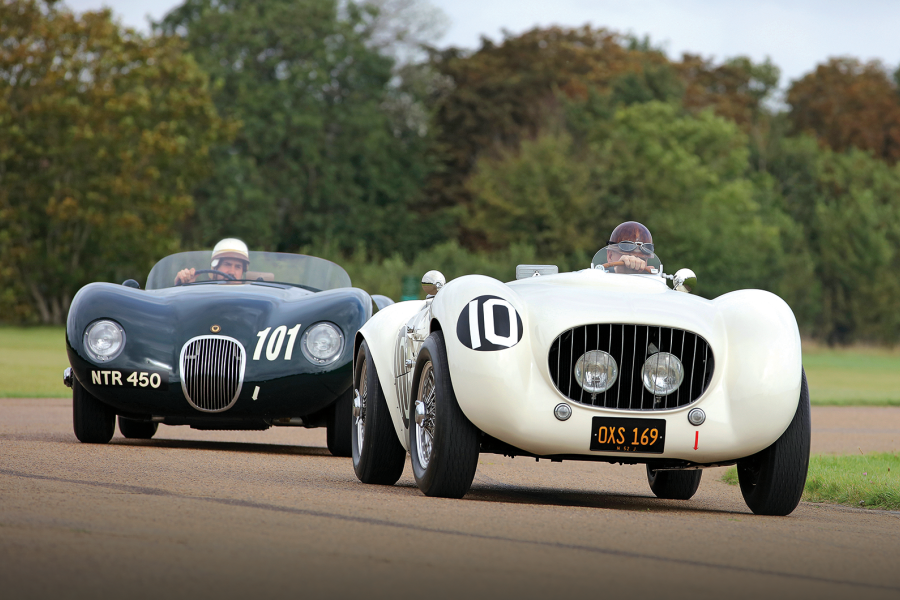Now, it is on day release. Starting with a pre-facelift XKR as its base, Special Vehicle Operations – then more of a skunkworks than the specialist division that exists today – fully seam-welded its coupé monocoque for greater strength and rigidity, already up 25% on the XJ-S in standard guise.
A partial rollcage was added along with kidney-squeezing Recaro bucket seats and four-point harnesses, and the rear seats were replaced by bins to accommodate two crash helmets – a hint at where Jag boffins foresaw the car being used.
Telling the X100 story as the model – arguably Jaguar‘s saviour – hits 25
The engine was lifted straight from the first-generation 4-litre XKR, but with power up from 370 to 400bhp thanks to some light fettling at SVO.
There are bigger changes at the back, where the rear end of the donor XKR was thrown out entirely and replaced by a derivative of the S-type’s suspension set-up.
It’s got stance, too, sitting 30mm lower on huge 20in BBS alloys shod with Pirelli P Zero tyres – an aggressive squat that suits the car perfectly.
But what really sets this car apart is the six-speed Tremec T56 gearbox, a meaty manual that found a home in everything from Yanks such as the Corvette and Viper to blue-bloods including the Vanquish.
The XKR-R is stripped back to be the ultimate, not least in the seats, which are like berths taken from a racing car
Slotting the hefty gearlever back into second, it’s hard not to feel as if you’re tasting forbidden fruit.
And as you level the accelerator on the approach to Fen End’s Karussell-like banked curve, a smiting feels like a very real possibility.
Thankfully, the manual XKR-R isn’t quite the monster it first appears, with a harsher ride than the convertible but not overly so, and pliant suspension that offers a comforting degree of roll through the bends.
Steering is sharper than a contemporary production XKR, thanks mainly to a quicker rack demanding just 2.2 turns from lock to lock, and the power delivery is, as you would expect, brutal.
Just two Jaguar XKR-Rs were built in 2001
X100 SVO doesn’t feel so much a distant relative as it does a younger, slightly wayward brother who’s been sleeping on your sofa for two months and just won’t take a hint.
It’s part of the family. More raw, without doubt, but offering the same weighty driving experience, inertia-defying acceleration and sense of effortless pace.
The extra driver involvement is simply the icing on the cake, a facet that you only realise the standard version lacks after experiencing the prototype. It’s no wonder they kept it quiet.
The big, blingy wheels of the XKR contrast the more traditional XK8’s
Experiencing the full range of X100s, from early to late and even this special prototype, fills me with nostalgia.
Tastes change, but I loved the XK8 when it broke cover at Geneva in ’96 and, despite a gradual estrangement as fewer seem to remain on the roads, I love it just as much today.
The 2006 XKR convertible impresses more than expected, doing its best to roll back the years beneath that supercharged howl, but visually I can’t help but feel that something of the launch car’s class got lost along the way.
The original coupé is a car in its prime, while the soft-top tries to hide its years behind mesh grilles and chrome light-surrounds.
The XK8’s sensibly sized alloy wheels with fat tyres, and the sea of burr walnut and soft hide, give an old-world sense of comfort; a British Heart Foundation charity-shop vibe that suits the car so much better than carbonfibre.
The longer spent behind the wheel of the 1996 model, the more you feel at home. Maybe, Tremec six-speeds and supercharged 4.2s aside, Jaguar might just have got it right the first time around.
Images Olgun Kordal
Thanks to Jaguar Classic; Jaguar Daimler Heritage Trust
XJ41: the missing link
The ‘F-type’ concept long before the production F-type served as a vision of the future; a decade later it blossomed into the XK8
Before the Jaguar XK8 came the original ‘F-type’: the XJ41 concept and its XJ42 coupé sister.
The project was first mooted in 1980, a time when the XJ-S was considered a failure relative to the E-type, and was to be spun off the all-new XJ40 platform.
Originally it was to be a simple, relatively light car, but, as was so often the case in the bad old days of the British motor industry, things started to slip. Its original launch date of 1986 was pushed back and competitors grew stronger, forcing Jaguar to upgrade the specification, adding weight all the while.
What had been intended to be a simple rear-drive sports car, powered by a normally aspirated straight-six, was suddenly perceived to need at least the option of four-wheel drive and twin turbocharging.
Development costs spiralled, but still the project continued until one game-changing event: in 1989, Ford bought Jaguar for £1.6billion. New boss Bill Hayden undertook a forensic analysis of the business, and killed the F-type.
That would have been that, were it not for maverick Tom Walkinshaw, who’d developed and built the XJ220 and was looking for the next big thing. His success in racing the XJ-S had turned sales of the big coupé around, and he wondered what the XJ41 might be like sitting on XJ-S underpinnings.
“The view at Jaguar was that the XJ-S platform was out of date and no longer part of the plan,” TWR’s former designer Ian Callum told Autocar in 2013. “But Tom knew it inside out and was convinced that he could build an F-type for a fraction of the cost of the one done in-house.”
Callum was sent over by Walkinshaw to see what could be done, and Project XX was born. Turning the XJ41 into something that could be built on an XJ-S platform was far from a cut-and-paste job – they had different wheelbases, tracks and overhangs – but the car came together.
“Then Jaguar said they didn’t want it,” recalled Callum, “which they were entitled to do because they hadn’t asked for it in the first place.
“All the same, Tom had invested a lot and was not about to let it drop. So he came in and said: ‘That Jag. D’you think you could turn it into an Aston?’ Which is exactly what I did.”
This became the DB7, but the XJ41 saga still had one more twist: “Ford turned to Jaguar and said, ‘If Walkinshaw can put a car on that platform, why can’t you?’” Jaguar called the result the XK8 and cashed-in big time: “Without XJ41, there’d have been no DB7 and no XK8.”
Words: Andrew Frankel
Image: Stan Papior
The XK goes extreme
Keith Helfet styled the XK180, which melds a D-type homage with speedster style
After being responsible for the stillborn XJ41 and penning the original proposal that design boss Geoff Lawson developed into the production XK8, South African-born stylist Keith Helfet was tasked with a very special project to celebrate 50 years of Jaguar’s XK engine in 1998.
“Despite the ultra-short eight-week timeframe, designs were developed around a shortened XK8 with a tuned 450bhp V8 and it was completed on schedule,” Helfet recalls of the XK180, which caused a sensation when it was revealed at the 1998 Paris Salon.
“I discussed the programme with Geoff, and it was agreed I’d work up a sort of roadster version of the XK8. It was a two-seater with a single windscreen wiper, allowing me to put ‘cleavage’ into the ’screen, which reflected the nacelles behind the driver and passenger’s heads. It was a very voluptuous car and very satisfying as an attempted homage to the D-type.”
While he was a student at the Royal College of Art, Helfet had been to Prescott Speed Hill Climb and been seduced by the sight of an unpainted D-type bodyshell.
“The shape struck a chord in my designer’s mind,” he says. “It was a piece of sculpture in steel. Who would have thought that I would one day design a spiritual successor? It was a defining moment in my career.”
Lawson subsequently asked Helfet to style a production car with the XK180 as its design ‘signature’. With no further brief, he decided to start with dimensions similar to the tiny Porsche Boxster Concept show car.
Called the F-type Concept, it was revealed at the Detroit Motor Show in 2000 but tragically Ford killed off the entire programme and it remained a show car. “One American enthusiast quipped that the rear was so sexy, it should be wearing a thong,” laughs Helfet.
Words: Mike Taylor
Images: Luc Lacey
Factfiles
Jaguar XK8
- Sold/number built 1996-2005/90,064 (all), 19,748 XK8 coupés
- Construction steel monocoque
- Engine all-alloy, dohc-per-bank 3996cc 32-valve V8, with electronic fuel injection
- Max power 290bhp @ 6100rpm
- Max torque 290lb ft @ 4250rpm
- Transmission five-speed automatic, RWD
- Suspension independent, by double wishbones, coil springs, dampers, anti-roll bar
- Steering ZF Servotronic variable-ratio power-assisted rack and pinion
- Brakes ventilated discs, with servo and anti-lock
- Length 15ft 7½in (4760mm)
- Width 6ft (1829mm)
- Height 4ft 9in (1295mm)
- Wheelbase 8ft 6in (2588mm)
- Weight 3644lb (1653kg)
- 0-60mph 6.4 secs
- Top speed 155mph (limited)
- Mpg 24.9
- Price new £47,950
- Price now £5-15,000*
Jaguar XKR Convertible
Where different to XK8
- Sold/number built 1998-2005/13,895
- Engine 4196cc, with Eaton rotor-type supercharger
- Max power 400bhp @ 6100rpm
- Max torque 408lb ft @ 3500rpm
- Transmission six-speed automatic
- Weight 4000lb (1815kg)
- 0-60mph 5.6 secs
- Mpg 22.6
- Price new £67,105
- Price now £7-25,000*
Jaguar XKR-R
Where different to XKR
- Sold/number built 2001/2
- Engine 3996cc
- Max power 400bhp @ 6150rpm
- Max torque 400lb ft @ 3600rpm
- Transmission Tremec T56 six-speed manual
- Weight 3726lb (1690kg)
- 0-60mph 4.5 secs
- Top speed 180mph
- Price new n/a
- Price now n/a
*Prices correct at date of original publication
READ MORE
Diamonds are for ever: the Jaguar E-type at 60
Jaguar XJ-S vs Lotus Elite: New order grand tourers
Driving the cars of The Saint: Volvo P1800, Jaguar XJ-S, Jensen Interceptor and Volvo C70
Greg MacLeman
Greg MacLeman is a contributor to and former Features Editor of Classic & Sports Car, and drives a restored and uprated 1974 Triumph 2500TC
